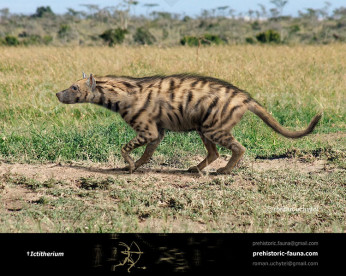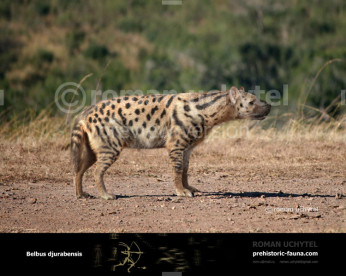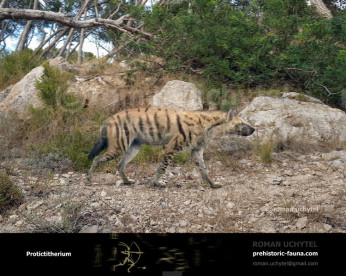Percrocuta carnifex
526526
Percrocuta (†Percrocuta (Kretzoi, 1938))
Order: Carnivora
Family: Percrocutidae
Time period: the late Miocene of Europe, Asia, and Africa
Size: 1.5 m in length, 90 cm in height, 65-120 kg of weight.
Percrocutidae is an extinct family of hyena-like feliform carnivores. Today, most scientists consider the Percrocutidae to be a distinct family - although usually as sister-taxa to Hyaenidae. Sometimes it is placed with the family Stenoplesictidae into the superfamily Stenoplesictoidea. Percrocuta was introduced as a genus of Percrocutidae in 1938. Percrocuta's relation to the family Hyaenidae was debated until 1985, when Percrocuta, Dinocrocuta, Belbus, and Allohyaena were accepted as the four genera of Percrocutidae. More recent evidence, however, has shown that Belbus and Allohyaena at least, are not percrocutids.
Percrocuta likely filled a similar ecological niche as todays spotted hyena, living and hunting in grassy plains ecosystems. Percrocuta possessed robust skull and jaws with attachment points that would have allowed for a powerful bite. The rear teeth of Percrocuta however were more adapted for slicing than crunching, something that might suggest a lifestyle that had more of a shift towards predation than actual scavenging.
Percrocuta instead lived alongside the ecological forerunners of modern big cats, the barbourofelids. These later would have been replaced by other predators such as true sabre-toothed cats such as Machairodus. Also while the spotted hyena lives alongside populations of wild dogs.
Pack hunting and living in social groups is still hard to establish with certainty for Percrocuta, it is at least considered more probable than solitary living.
It lived in Europe, Asia, and Africa, during the Miocene epoch.
With a maximum length of 1.50 m, Percrocuta was much bigger than its modern spotted hyena, but smaller than a female lion. Similar to modern hyenids, its hind legs were shorter than the front legs, resulting in a characteristic sloping back.
Оплата
У Вас є кілька зручних способів купівлі зображення: кредитна чи дебетова картка Visa, Mastercard, Maestro; PayPal або банківський переказ
Percrocuta (†Percrocuta (Kretzoi, 1938))
Order: Carnivora
Family: Percrocutidae
Time period: the late Miocene of Europe, Asia, and Africa
Size: 1.5 m in length, 90 cm in height, 65-120 kg of weight.
Percrocutidae is an extinct family of hyena-like feliform carnivores. Today, most scientists consider the Percrocutidae to be a distinct family - although usually as sister-taxa to Hyaenidae. Sometimes it is placed with the family Stenoplesictidae into the superfamily Stenoplesictoidea. Percrocuta was introduced as a genus of Percrocutidae in 1938. Percrocuta's relation to the family Hyaenidae was debated until 1985, when Percrocuta, Dinocrocuta, Belbus, and Allohyaena were accepted as the four genera of Percrocutidae. More recent evidence, however, has shown that Belbus and Allohyaena at least, are not percrocutids.
Percrocuta likely filled a similar ecological niche as todays spotted hyena, living and hunting in grassy plains ecosystems. Percrocuta possessed robust skull and jaws with attachment points that would have allowed for a powerful bite. The rear teeth of Percrocuta however were more adapted for slicing than crunching, something that might suggest a lifestyle that had more of a shift towards predation than actual scavenging.
Percrocuta instead lived alongside the ecological forerunners of modern big cats, the barbourofelids. These later would have been replaced by other predators such as true sabre-toothed cats such as Machairodus. Also while the spotted hyena lives alongside populations of wild dogs.
Pack hunting and living in social groups is still hard to establish with certainty for Percrocuta, it is at least considered more probable than solitary living.
It lived in Europe, Asia, and Africa, during the Miocene epoch.
With a maximum length of 1.50 m, Percrocuta was much bigger than its modern spotted hyena, but smaller than a female lion. Similar to modern hyenids, its hind legs were shorter than the front legs, resulting in a characteristic sloping back.

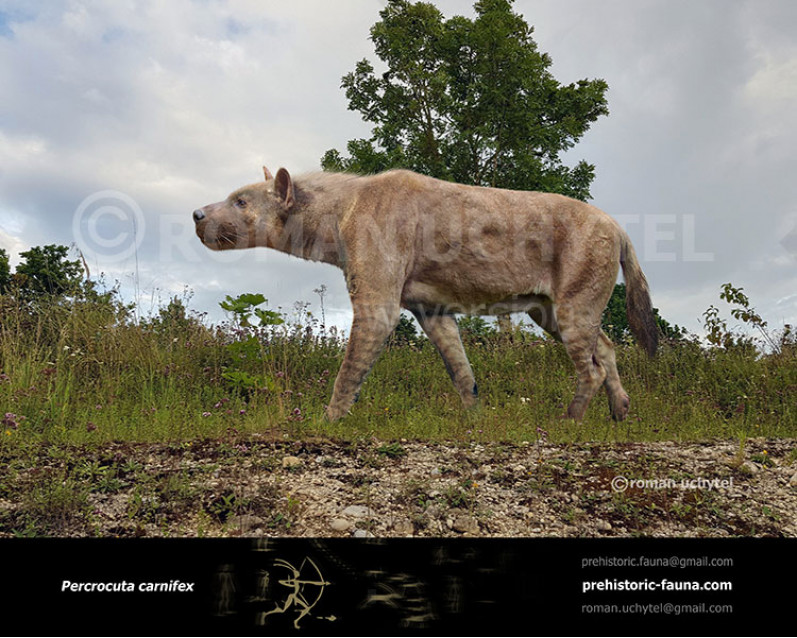
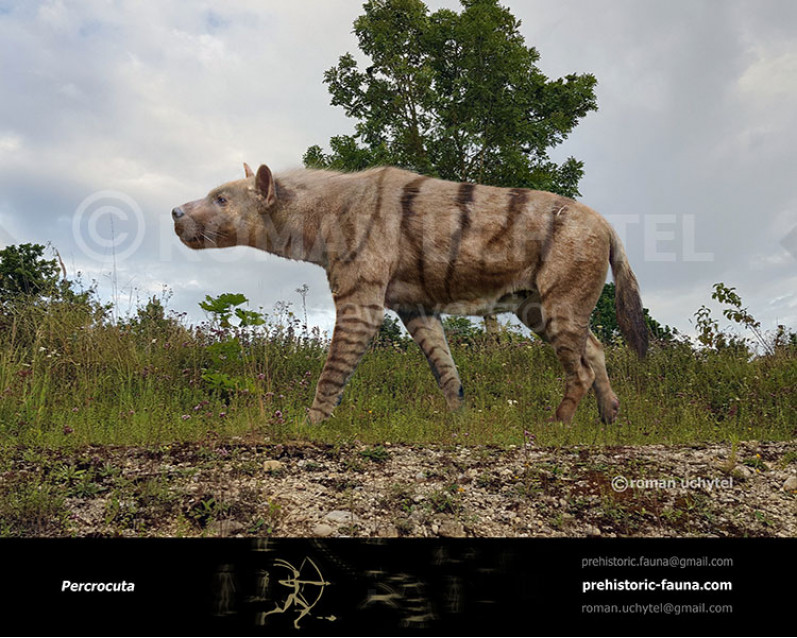


-346x277.jpg)
